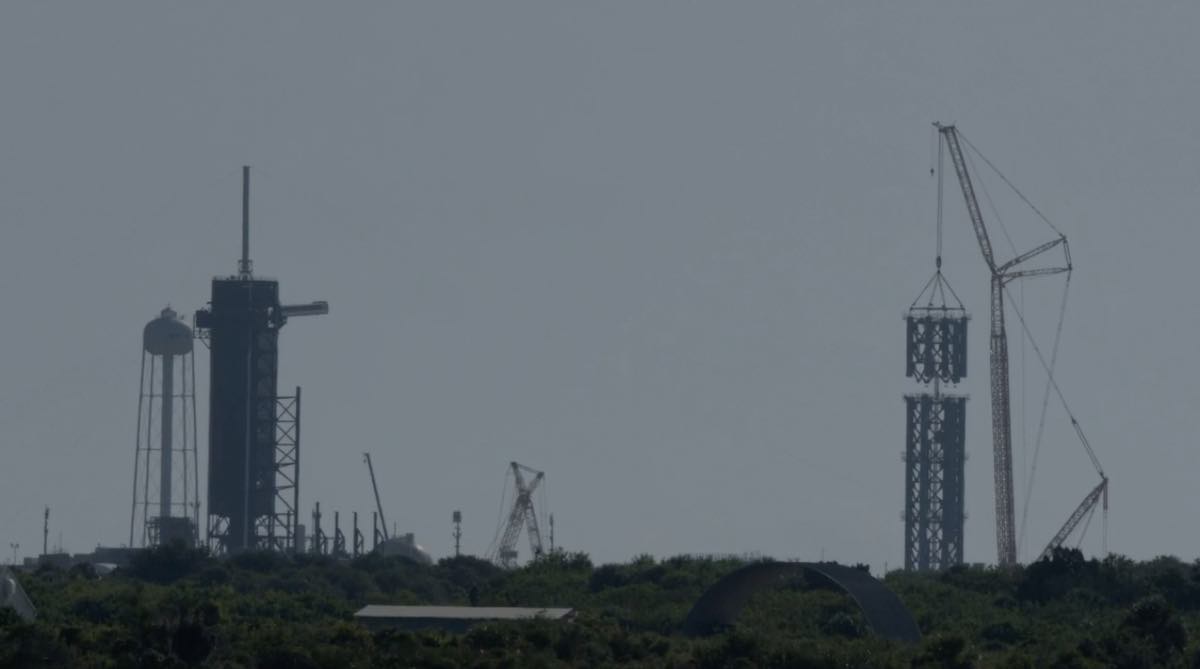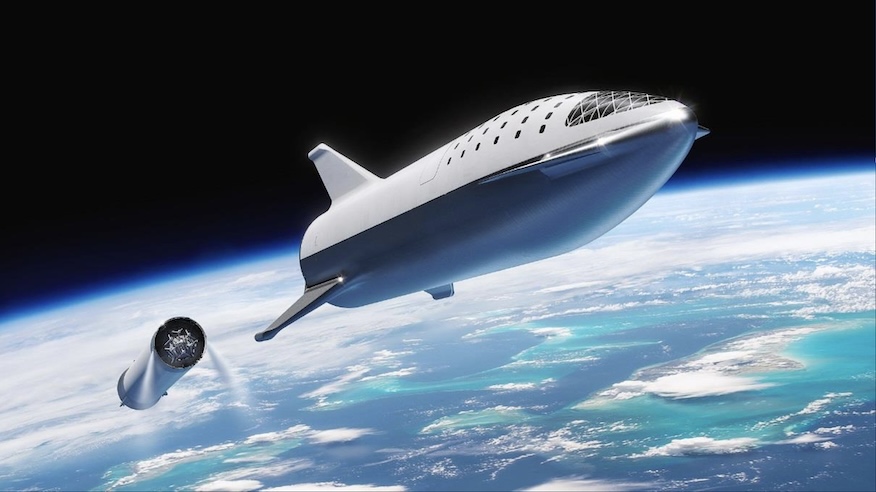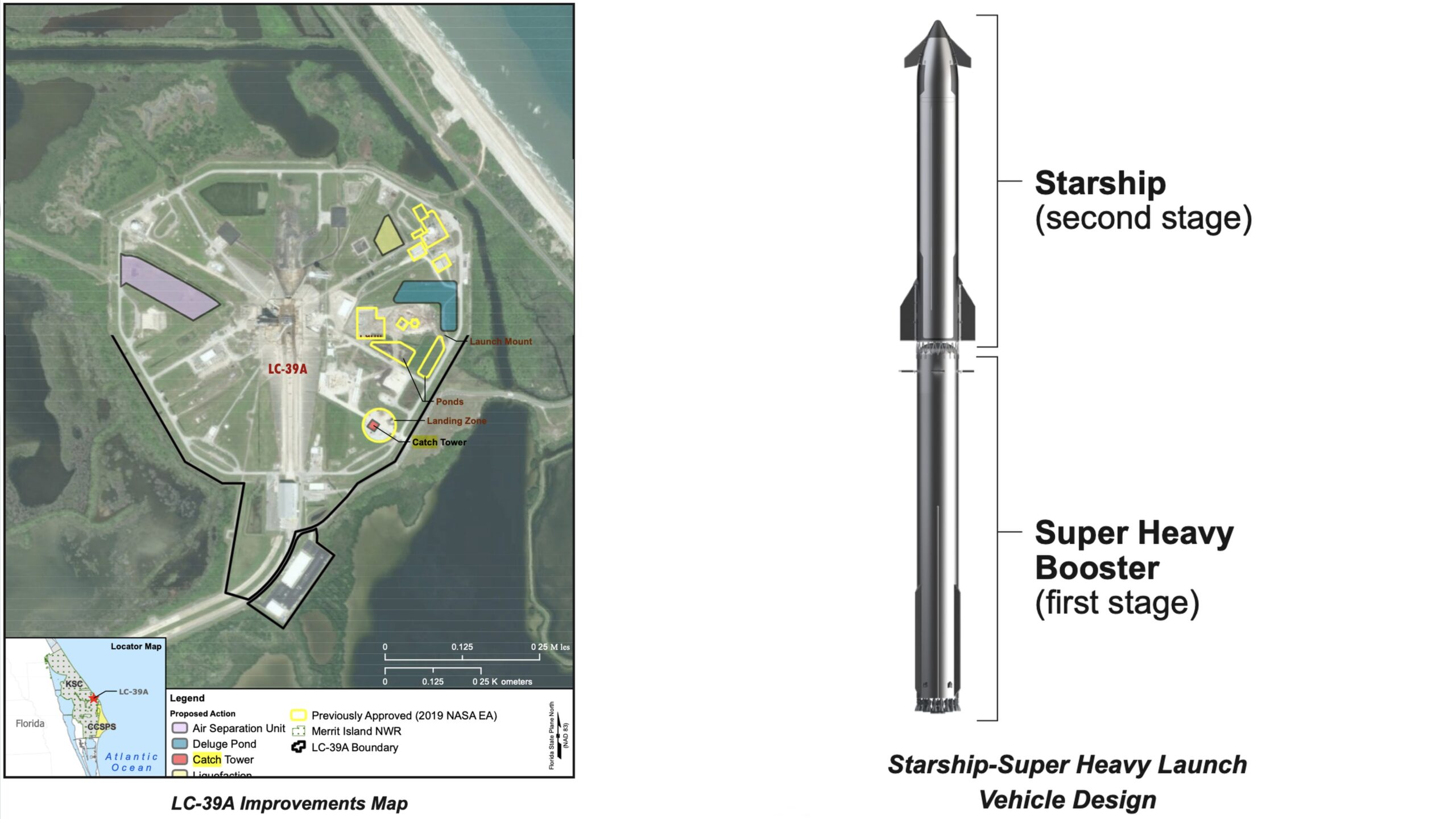The Federal Aviation Administration is preparing to collect public input on SpaceX’s starship launch operations at NASA’s Kennedy Space Center. The request for comments comes about a month after an environmental review of a 100-acre expansion for SpaceX at its Hangar X headquarters closed.
The two projects highlight a continued increase in activity for the company, which aims to launch more than 140 Falcon launches by the end of 2024, most of them from Florida’s Space Coast.
“SpaceX is attracting a lot of attention. No doubt about it. They’re doing a lot of amazing things and they’re getting a lot of public attention, not just locally or regionally, but globally,” said Don Dankert, technical director of the Environmental Management Division at NASA’s Kennedy Space Center.
On June 12 and 13, the Federal Aviation Administration (FAA) will hold a series of public meetings to inform the public and answer questions about SpaceX’s proposal to launch Starship from Launch Complex 39A (LC-39A). There will also be a virtual meeting on June 17 for those unable to attend in person.
- June 12 – 2-4pm ET, 6-8pm ET at Radisson Cape Canaveral, 8701 Astronaut Blvd, Cape Canaveral, Florida 32920
- June 13 – 6-8pm ET at Kennedy Space Center Visitor Complex, Space Commerce Way, Merritt Island, FL 32953
- June 17 – Virtual
Attendees at the public hearings will include representatives from the Air Force, US Space Force, US Coast Guard, US Fish and Wildlife Service, Merritt Island National Wildlife Refuge, Canaveral National Seashore and SpaceX.

“Through scoping, you introduce the project to the general public and others and take that feedback and really find out: what are these key issues? What are the things that the public may have an increased concern about?” Dankert said. “And that, in turn, leads us to say, ‘Okay, we need to look at this a lot more closely or dive into this, or maybe we haven’t considered this.’
Through the Environmental Impact Statement (EIS) process, the FAA will conduct a review of the impacts of SpaceX spacecraft operations in a number of areas, including air quality, coastal resources, land use, noise and water resources, among others.
The rating is a continuation of the EA prepared in 2019 for starship launches.
“Since then, there have been changes in the configuration of vehicles, the concept of operation, the need for infrastructure. And when SpaceX approached us with this, they obviously need an FAA license to operate on 39A at KSC,” Dankert said. “When we looked at it, we considered it an EIS (environmental impact statement). In a sense, it will complement or continue the analysis we started in 2019.”
He said NASA has asked the FAA to take over as the lead federal agency in the process because it is in charge of launch licenses.
“I think it gives us more reliability and reduces some of the risk. The FAA will have exactly what it needs to evaluate when it comes time for a licensing action,” Dankert explained. “KSC is what we call a ‘collaborating agency’ in the development of this document. So we are fully committed.”

In 2019, SpaceX proposed 24 Starship launches per year, but with a different-looking Starship rocket. At the time, the upper stage was expected to consist of seven Raptor engines and land either on Landing Zone 1 (LZ-1) at the Cape Canaveral Space Force Station (CCSFS) or on a drone.
Meanwhile, the Super Heavy booster would consist of 31 Raptor engines and land on a droneship as well. At the time, there were no plans to return the landing booster to the LC-39A.
“SpaceX now proposes to build additional launch infrastructure not previously considered in the 2019 EA: a super-heavy capture tower, a natural gas liquefaction system and an air separation unit for propellant production, and a rainwater/flood tank,” the FAA wrote. In a separate document, she added that SpaceX would likely use about 1 million gallons of deluge water per launch attempt.
“SpaceX also proposes to launch an advanced Starship and Super Heavy vehicle design (up to nine Raptor engines for the Starship and up to 35 Raptor engines for the Super Heavy booster), operating at a projected higher launch rate (up to 44 launches per year) and landing the Super Heavy booster on LC-39A to support its reusability concept. Starship landings are no longer proposed in Landing Zone 1 on the CCSFS.

The new proposal would also give SpaceX the option to land the booster on either the LC-39A, a drone, or spend it at least five nautical miles offshore. A similar environmental assessment is being conducted by the Air Force Department for Starship Operations at Space Launch Complex 37, the former home of the United Launch Alliance’s Delta 4 Heavy rocket.
In an FAA document outlining SpaceX’s proposal, the agency said there was no alternative option that would be a reasonable change of course from the primary proposal. It argued that “the only alternative to the proposed action as described in this EIS is the no-action alternative.”
“The LC-39A could provide NASA’s time-critical missions for short-term lunar exploration in NASA’s Artemis and Human Landing System programs,” the FAA wrote. “In addition to NASA’s critical requirements, the LC-39A would provide a diversity of launch sites for the Starship-Super Heavy to serve commercial exploration interests.”
The FAA also offered a glimpse of future versions of the fully integrated Starship rocket, saying it “is expected to be up to 492 feet (150 meters) tall, depending on configuration, and about 30 feet in diameter.” This compares to today’s vehicle, which is only 397 feet (121 meters) tall.
The document also states that the upgraded version of the Starship will feature 35 Raptor engines for the Super Heavy booster and nine for the upper stage.

100 acres no more woods
In addition to the Starship launch proposal, KSC has been busy with another SpaceX request. Dankert’s office spent the better part of two years reviewing SpaceX’s proposal to expand its main footprint at KSC, known as the Roberts Road campus, by 100 acres.
According to an Environmental Assessment (EA) approved in 2018, SpaceX is making significant expansion and improvements to its current 67 acres, but the goal of this new expansion is to move most of its assets around Brevard County to this single location.

As with any infrastructure project in KSC, this meant undergoing a NEPA (National Environmental Policy Act) review. Part of this includes calling for public comment on the general draft just before the evaluation begins, and then calling for public comment again once the draft EA is issued.
“We are publishing the document, posting it on the website, and giving the general public, including all of our participating agencies and others, an opportunity to read the document, look at the subsequent findings, and then provide formal comment back to the Agency for us and SpaceX to consider as we develop the final document.” Dankert said.
After doing their due diligence and considering all the feedback, NASA issued a FONSI (no finding of significant impact) this spring, paving the way for SpaceX to move forward with its expansion plans. The next step in the process is for SpaceX to enter into a lease agreement with KSC.
“It’s being worked on, in the final stages of executing this actual deal between NASA and SpaceX,” Dankert said.
The transformation of this hundred-acre property will not be a quick process. Part of SpaceX’s ability to develop space will include submitting a site plan to NASA “with additional details on building dimensions and site layout,” the FONSI document says.
“KSC’s site plan review process identifies potential constraints including land use, operational conflicts, natural resources, line of sight, safety and security and ensures that the SpaceX plan is consistent with this SEA,” the document states. “SpaceX will implement changes as requested by NASA.”

Details about SpaceX’s future expansion remain largely tight-lipped, but the filing does provide some nuggets of information. For example, in the biological assessment prepared by the US Fish and Wildlife Service (FWS) Florida Ecological Services Field Office (FESFO), there are references to buildings that will be up to 400 feet tall.
“The action proposes the construction of multiple towers up to 400 feet in height,” Robert Carey, manager of the Environmental Review Division at FESFO, wrote in his report. “Given that Action is approximately six miles from the nearest nesting beach, the height of these towers has the potential to be seen by nesting sea turtles during sea turtle nesting season.”
For comparison, the Statue of Liberty is about 305 feet (about 93 m) tall, and the current iteration of the Starship Super Heavy booster is 232 feet (about 71 m).
Even after the release of FONSI, Dankert and his office will continue to work with SpaceX on the future of the web.
“When SpaceX starts developing their finished plans, we have an opportunity to review them and make sure they use turtle-friendly lighting where possible,” Dankert said. “Even though it’s a good distance from the beach, it can contribute to what we call ‘sky glow’ on the beach.
“SpaceX has a great environmental workforce with whom we continue to work very closely through land development, construction and future operations.”